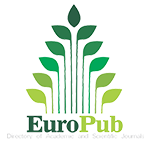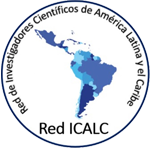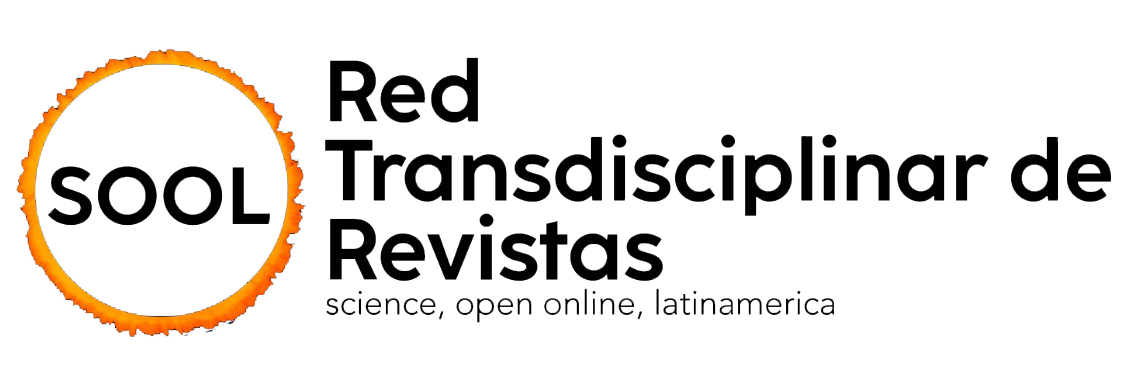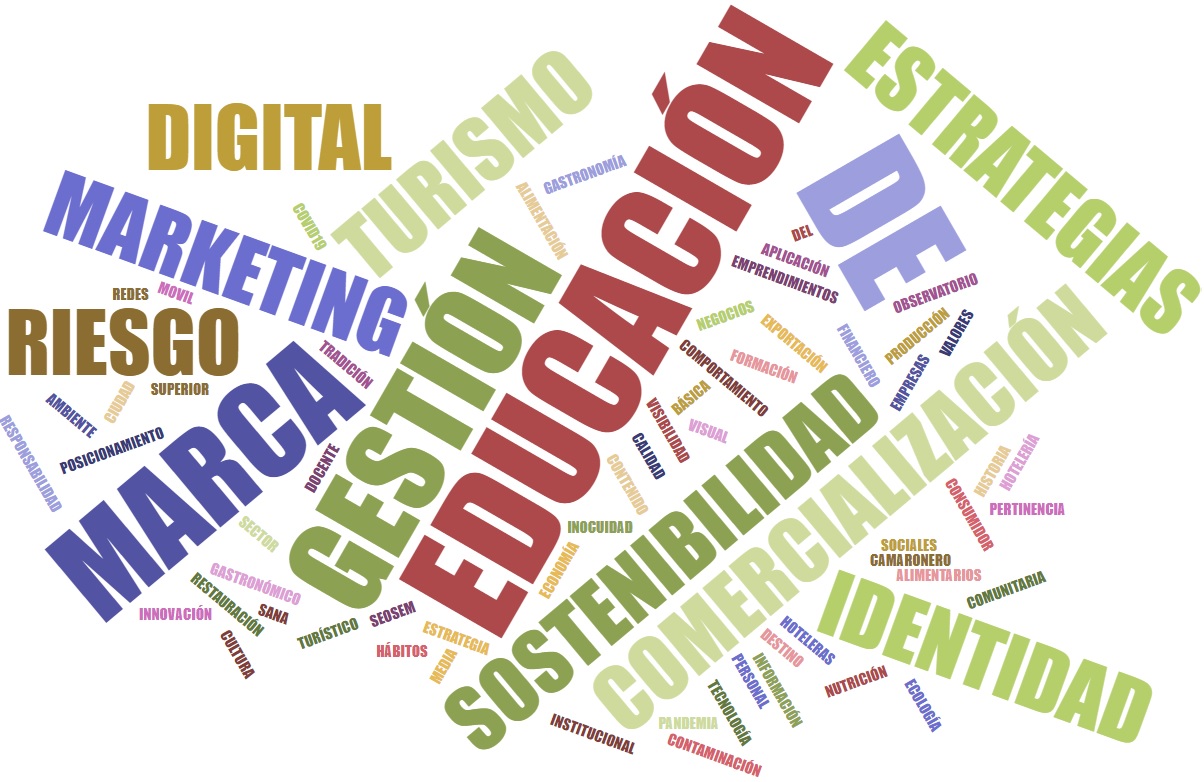Comunidades de Aprendizaje: Cómo Fomentar Competencias Socioemocionales en Educación Física para Bienestar Estudiantil en Bachillerato.
DOI:
https://doi.org/10.56124/ubm.v5i9.011Palabras clave:
Análisis de Correspondencia, Correlación de Pearson, Desarrollo Integral, Estrategias de enseñanza, Prueba no paramétrica de Kruskal-WallisResumen
La comprensión sobre Comunidades de Aprendizaje (CA) y cómo fomentar competencias socioemocionales (CS) en Educación Física (EF) proporciona una valiosa reflexión sobre la importancia de un enfoque integral en la educación. El objetivo de esta investigación fue evaluar la conexión entre CA en el ámbito de la EF y el desarrollo de las CS en estudiantes para la formulación de estrategias pedagógicas en estudiantes de bachillerato de la Unidad Educativa Mercedes Aveiga Zambarno (UEMAZ). Se realizaron encuestas con una intensidad del 50% de los estudiantes de Bachillerato. La matriz resultante fué analizada empleando la prueba no paramétrica de Kruskal-Wallis, correlación de Pearson y Análisis de Correspondencia. Los resultados no encontraron asociación entre CA y CS en estudiantes de UEMAZ, Manabí. Se observó un bajo desarrollo en habilidades de Cooperación y Colaboración en la Dimensión de aprendizaje, así como en el cambio de hábitos de actividades físicas en la Dimensión de Bienestar físico. En psicología, se identificó un bajo desarrollo en Autoeficacia en tareas y actividades. Finalmente, la Dimensión de Entorno asoció un bajo desarrollo con una Reducción de Conflictos. Todo esto, destaca la necesidad de mejorar las estrategias pedagógicas en EF para el desarrollo integral de los estudiantes, con importantes implicaciones prácticas para la educación. Este estudio proporciona una base para futuras investigaciones y resalta la relevancia de diseñar intervenciones pedagógicas efectivas que impulsen el desarrollo socioemocional de los estudiantes en el contexto de la EF.
Descargas
Citas
Álvarez-Zambrano, G. & Cañadas-López, Á. (2024). Explorando el aprendizaje significativo en profesores de educación básica general, Distrito 13D07, provincia de Manabí. Revista Ecos de la Academia, 10(19), 9-27. doi. 10.53358/ecosacademia.v10i19.965
Álvarez-Zambrano, G. & Cañadas-López, Á. (2023). Estatus socioeconómico y rendimiento matemático en la Unidad Educativa “Mercedes Aveiga de Zambrano”, período 2022/2023, Manabí. Revista Ecos de la Academia, 9(17), 9-33. doi. 10.53358/ecosacademia.v9i17.890
Andrade-Cedeño, L. S., & Molina-Álvarez, B. E. (2022). Caracterización de las instituciones educativas-distrito 13D07 en relación con la implementación del plan institucional de continuidad educativa, Manabí, período 2020-2021 [Tesis de Maestría, ESPAM]. https://repositorio.espam.edu.ec/handle/42000/1913
Barber, W., Walters, W., Chartier, P., & Temertzoglou, C. (2022). Examining self-Confidence and self-Perceived competence in Canadian pre-service teachers (PSTs): the role of biographies in physical education teacher education (PETE). Sport, Education and Society, 27(3), 347-360. doi. 10.1080/13573322.2020.1844649
Bielaczyc, K., & Collins, A. (2013). Learning communities in classrooms: A reconceptualization of educational practice. In Instructional-design theories and models (pp. 269-292). Routledge.
Bortz, J., & Schuster, C. (2011). Statistik für Human-und Sozialwissenschaftler:Limitierte Sonderausgabe. Springer-Verlag.https://n9.cl/vm2e8
Brouwer, J., De Matos Fernandes, C. A., Steglich, C. E., Jansen, E. P., Hofman, W. A., & Flache, A. (2022). The development of peer networks and academic performance in learning communities in higher education. Learning and Instruction, 80, 101603. doi. 10.1016/j.learninstruc.2022.101603
Bennett, E. E., & McWhorter, R. R. (2020). Digital technologies for teaching and learning. In The Handbook of Adult and Continuing Education (pp. 177-186). Routledge.
Beddoes, Z., Prusak, K.A., & Hall, A. (2014). Overcoming marginalization of physical education in America’s schools with professional learning communities. Journal of Physical Education, Recreation and Dance, 85(4), 21–27. doi. 10.1080/07303084.2014. 884432
Beddoes, Z. E., Prusak, K. A., & Barney, D. (2019). Taking the helm: Physical educators managing change through professional learning communities. Quest, 71(4), 479-496. doi. 10.1080/00336297.2018.1556169
Cañadas, L (1983). El Mapa Ecológico y Bioclimático del Ecuador: Editores Asociados Cia. https://www.ipgh.gob.ec/portal/index.php/biblioteca-menu/novedades-bibliograficas/456-el-mapa-bioclimatico-y-ecologico-del-ecuador
Cañadas-López, Á., Rade-Loor, D., & Molina-Hidrovo, C. (2020a). In situ assessment of Jatropha curcas germplasm under tropical dry forest conditions in Manabí-Ecuador. Revista Facultad Nacional de Agronomía Medellín, 73(3), 9273-9281. doi. 10.15446/rfnam.v73n3.85788
Cañadas-López, Á., Rade-Loor, D., Siegmund-Schultze, M., Zambrano-Cedeño, X., Vargas-Hernández, J., & Wehenkel, C. (2020b). Pruning and fertilization effects on jatropha yields under smallholder's conditions in a Tropical Dry Forest from Ecuador. Revista Facultad Nacional de Agronomía Medellín, 73(1), 9089-9097. doi. 10.15446/rfnam.v73n1.79059.
Cañadas-López, Á., Rade-Loor, D. Y., Quijije-Pinargote, R. O., Sotomayor, I. A., & Ormaza-Molina, A. M. (2018a). Assessment of 112 tomato (Solanum lycopersicum L.) cultivars for industrial processing in Portoviejo, Ecuador. Acta Agronómica, 67(2), 347-354. 10.15446/acag.v67n2.62725
Cañadas-López, Á., Rade-Loor, D., Domínguez-Andrade, J. M., Vargas-Hernández, J. J., Molina-Hidrovo, C., Macías-Loor, C., & Wehenkel, C. (2017). Variation in seed production of Jatropha curcas L. accessions under tropical dry forest conditions in Ecuador. New Forests, 48, 785-799. https://doi.org/10.1007/s11056-017-9597-1
Cañadas-López, Á., Rade, D., Domínguez, J. M., Murillo, I., & Molina, C. (2016). Modelación forestal como innovación tecnológica para el manejo silvicultural y aprovechamiento económico de la balsa, Región Costa-Ecuador. Abya Yala. https://repositorio.iniap.gob.ec/handle/41000/4510
Cho, H., Kim, S., & Lee, Y. H. (2021). Sport coaches’ positive emotions, task performance, and well-being: The mediating role of work satisfaction. International Journal of Sports Science & Coaching, 16(6), 1247-1258. doi. 10.1177/17479541211026246
Davis, L. (2020). Faculty beliefs concerning the preparation of physical education teacher education students for appropriate practices. The Physical Educator, 77(1), 42–58. doi.10.18666/TPE-2020-V77-I1-9386
Dyson, B., Howley, D., & Wright, P. M. (2021). A scoping review critically examining research connecting social and emotional learning with three model-based practices in physical education: Have we been doing this all along?. European Physical Education Review, 27(1), 76-95. doi. 10.1177/1356336X20923710
Ekelund, U., Steene-Johannessen, J., Brown, W. J., Fagerland, M. W., Owen, N., Powell, K. E., ... & Lee, I. M. (2016). Does physical activity attenuate, or even eliminate, the detrimental association of sitting time with mortality? A harmonised meta-analysis of data from more than 1 million men and women. The lancet, 388(10051), 1302-1310.
Gil-Moreno, J., & Rico-González, M. (2023). The Effects of Physical Education on Preschoolers’ Emotional Intelligence: A Systematic Review. Sustainability, 15(13), 10632. doi. 10.3390/su151310632
Greenberg, M. T., Domitrovich, C. E., Weissberg, R. P., & Durlak, J. A. (2017). Social and emotional learning as a public health approach to education. The future of children, 13-32. doi. 10.1353/foc.2017.0001
Hyndman, B. P., & Pill, S. (2016). The Influences on teaching perspectives of Australian physical education teacher education students: The first-year influences on teaching perspectives exploratory (FIT-PE) study. Australian Journal of Teacher Education, 41(5), 99–118. https://doi.org/10.14221/ajte.2016v41n5.7
Instituto Nacional de Evaluación Educativa, INEE. (2015). Ley orgánica de la Educación Intercultural. Revisado https://www.evaluacion.gob.ec/wp-content/uploads/downloads/2015/06/Anexo-b.-LOEI.pdf
Katzmarzyk, P. T., Powell, K. E., Jakicic, J. M., Troiano, R. P., Piercy, K., Tennant, B., & 2018 Physical Activity Guidelines Advisory Committee. (2019). Sedentary behavior and health: update from the 2018 physical activity guidelines advisory committee. Medicine and science in sports and exercise, 51(6), 1227. doi. 10.1249/MSS.0000000000001935
Ladwig, M. A., Vazou, S., & Ekkekakis, P. (2018). My best memory is when I was done with it: PE memories are associated with adult sedentary behavior. Translational Journal of the American College of Sports Medicine, 3(16), 119-129. doi. 10.1249/TJX.0000000000000067
Lave, J., & Wenger, E. (1991). Situated learning: Legitimate peripheral participation. Cambridge university press.
Maher, A. J., & Morley, D. (2020). The Self stepping into the shoes of the Other: Understanding and developing self-perceptions of empathy among prospective physical education teachers through a special school placement. European Physical Education Review, 26(4), 848-864. doi. 10.1177/1356336X19890365
Ministerio de Educación. (2016). Currículo de los Niveles de Educación Obligatoria. Ministerio de Educación de Ecuador. Obtenido de https://educacion.gob.ec/wp-content/uploads/downloads/2016/03/Curriculo1.pdf
Ministerio de Educación. (2017) Talleres de fortalecimiento meso y microcurricular de Educación Física en el país. Memorando No. MINEDUC-SFF-2017-00282-M. Quito: Ministerio de Educación del Ecuador.
Parker, M., Patton, K., Gonçalves, L., Luguetti, C., & Lee, O. (2022). Learning communities and physical education professional development: A scoping review. European Physical Education Review, 28(2), 500-518. doi.10.1177/1356336X21105558
Ramos-Mendoza, J & Zambrano-Vera, G (2024). El aprendizaje cooperativo y su incidencia en el aprendizaje del idioma inglés en el alumnado. ULEAM Bahía Magazine (UBM) 2600-6006, 5(8), 49-56. doi.10.56124/ubm.v5i8.0007
Richards, K., Killian, C., Kinder, C., Badshah, K., & Cushing, C. (2020). Chapter 4: Twitter as a professional development platform among US physical education teachers. Journal of Teaching in Physical Education, 39(4), 454–463. doi.10.1123/jtpe.2020-0001
Rico-González, M. (2023). Developing emotional intelligence through physical education: A systematic review. Perceptual and Motor Skills, 130(3), 1286-1323. doi. 10.1177/00315125231165162
Sáez de Ocáriz, U., & Lavega-Burgués, P. (2020). Development and validation of two questionnaires to study the perception of conflict in physical education. International journal of environmental research and public health, 17(17), 6241. doi. 10.3390/ijerph17176241
Strauch, U. G., Wäsche, H., & Jekauc, D. (2019). Coach competences to induce positive affective reactions in sport and exercise—a qualitative study. Sports, 7(1), 16. doi. 10.3390/sports7010016
Su, T., Tian, L., & Huebner, E. S. (2021). The reciprocal relations among prosocial behavior, satisfaction of relatedness needs at school, and subjective well-being in school: A three-wave cross-lagged study among Chinese elementary school students. Current Psychology, 40, 3734-3746. doi. 10.1007/s12144-019-00323-9
Trigueros, R., Cangas, A. J., Aguilar-Parra, J. M., Álvarez, J. F., & García-Más, A. (2019). No more bricks in the wall: Adopting healthy lifestyles through physical education classes. International Journal of Environmental Research and Public Health, 16(23), 4860. doi. 10.3390/ijerph16234860
Wang, C. (2022). The role of physical activity promoting thinking skills and emotional behavior of preschool children. Psicologia: Reflexão e Crítica, 35, 24. doi. 10.1186/s41155-022-00223-1
United Nations Educational Scientific and Cultural Organization, UNESCO. (2015). International charter of 762 physical education, physical activity and sport. Author. 763.
United Nations Educational Scientific and Cultural Organization, UNESCO, (2017). Sixth International 764 Conference of Ministers and Senior Officials Responsible for Physical Education and Sport 765 (MINEPS VI) [Final Report].
Wenger-Trayner, E. (2010) Communities of practice and social learning systems: the career of a concept. In Blackmore, C. (Editor) Communities of practice and Social Learning Systems. (London and Milton Keynes, Springer Verlag and the Open University), 179-198.
Wenger-Trayner, E., and Wenger-Trayner, B. (2014). Learning in landscapes of practice: a framework. In Wenger-Trayner, E., Fenton-O’Creevy, M., Hutchinson, S., Kubiak, C., and Wenger-Trayner, B. (Eds.) Learning in landscapes of practice: boundaries, identity, and knowledgeability. (London, Routledge), 13-30.
Wenger- Trayner E. (1999). Communities of practice: Learning, meaning, and identity. Cambridge university press.
Wrench, A. (2017). Spaces and physical education pre-service teachers’ narrative identities. Sport, Education and Society, 22(7), 825–838. doi. 10.1080/13573322.2015.1094046
Wright, P. M., Gray, S., & Richards, K. A. R. (2021). Understanding the interpretation and implementation of social and emotional learning in physical education. The curriculum journal, 32(1), 67-86. doi. 10.1002/curj.85
Publicado
Versiones
- 2024-07-29 (2)
- 2024-07-15 (1)
Cómo citar
Número
Sección
Licencia
Derechos de autor 2024 Leiner Ferdinan Alcívar Álvarez, Julia Orlenda Robinson Aguirre

Esta obra está bajo una licencia internacional Creative Commons Atribución-NoComercial-SinDerivadas 4.0.



































